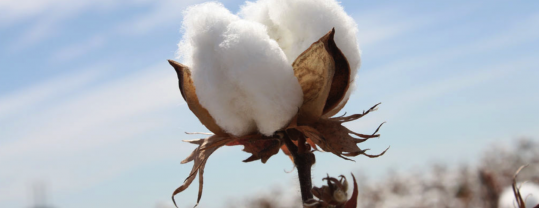By Chris Clayton
DTN Ag Policy Editor
WASHINGTON (DTN) — Cotton farmers looking for further federal support are caught in a political tussle that doesn’t appear to have any quick solution.
Secretary of Agriculture Tom Vilsack stood his ground Wednesday in a House Agriculture Committee hearing looking at the state of the rural economy. Vilsack maintained he does not have authority under the 2014 farm bill to create a commodity program for cottonseed by designating it as an “other oilseed” subject to payments under the Agricultural Risk Coverage or Price Loss Coverage programs.
“I do not believe in good faith that I have that ability,” he said.
Cash cotton prices now are running between 53 cents to 54 cents per pound while the March, May, July and December contracts are all in the 58 cents to 59 cents price range, according to DTN closing cotton commentary for Feb. 23. Lawmakers blame the poor and stagnant prices on high stocks in China, which has reduced its imports by as much as 80% in recent years. Other countries such as India and Turkey also are increasing cotton production.
The farm bill specifically excluded cotton from commodity programs such as Agricultural Risk Coverage and Price Loss Coverage. Yet, agriculture committee members from cotton states say there’s a distinction between farm payments for cotton lint and including cottonseed in the commodity programs. House Agriculture Chairman Michael Conaway, R-Texas, who has championed the issue for growers in his area, said USDA lawyers are misinterpreting language in the law.
“I don’t think there’s any reference to cottonseed, period, during the farm bill negotiations — none,” Conaway said. “So to rely on something that didn’t happen, I think you’ve been misled.”
Congressmen from Texas, Georgia, Mississippi, Arkansas and Oklahoma all either asked Vilsack to reconsider his position regarding the legality of the program, or asked the secretary if there were other options available to help cotton producers.
“I hope you understand in cotton country it’s a severe issue,” said Rep. Randy Neugebauer, R-Texas, who added that at least some farmers are questioning whether they will continue to farm. “My feedback from the industry is if that’s one of the tools in the toolbox, then let’s get that tool out.”
Rep. David Scott, D-Ga., said in his district there could be 280,000 fewer cotton acres planted. He said the crisis is now because cotton planting may already be starting in some states.
Vilsack said the farm bill debate revolved around saving $23 billion in potential spending over 10 years. Cotton was facing issues regarding the World Trade Organization lawsuit brought by Brazil over subsidies, so cotton farmers removed themselves from the program.
“Decisions were made to make this program, and there was no effort at that time to create cottonseed as an oilseed at that time,” Vilsack said.
Additionally, giving cottonseed an oilseed designation could cost $1 billion a year, which is one reason why Congress doesn’t want to have to take up the issue and look for offsets. “If Congress wants to reopen the farm bill, then you will have to deal with the costs,” Vilsack said.
Beyond interpretations about the oilseed designation, USDA recently re-established commodity certificates to help cotton gins and producers increase marketing-loan gains beyond payment caps set in the farm bill.
The secretary said his hands are tied in other ways. USDA could help cotton farmers by extending transition payments created in the 2014 farm bill. However, congressional appropriators have restricted USDA’s use of the Commodity Credit Corp. funds since 2012. The blanket restriction came after Vilsack used the authority to help Arkansas farmers in 2010, a move Republicans saw as USDA trying to help out then-Sen. Blanche Lincoln’s failed re-election campaign.
“The reality is when there is a blanket restriction and you have situations like this and low commodity prices, then we don’t have the ability to respond,” Vilsack said. He called on Congress to lift the CCC restrictions so at least the next secretary of agriculture would have such authority.
USDA has pitched the idea of establishing a cost-share program with cotton ginners that could provide some resources to gins or directly to cotton producers. Vilsack said USDA was still working on issues with that to ensure it would be WTO compliant and he indicated there were mixed signals from the industry over the idea. It would be helpful to get some indication from the industry about how this could work, Vilsack said. “We have not received that kind of feedback,” he said.
Rep. Trent Kelly, R-Miss., one of the last lawmakers to question the secretary, stressed that timeliness is critical because it could take months either for USDA to draft a program and write the rules or even longer to get action from Congress. Kelly also noted the situation with cotton is forcing farmers to grow other crops such as peanuts, further depressing prices for those crops as well.
“If we do this in August, if we do this in April, it is past the point to have an impact on our farmers,” Kelly said. He added, “Right now, I’ve got cotton farmers growing peanuts because it’s profitable and that’s suppressing the prices for peanuts.”
Chris Clayton can be reached at Chris.Clayton@dtn.com
Follow him on Twitter @ChrisClaytonDTN

